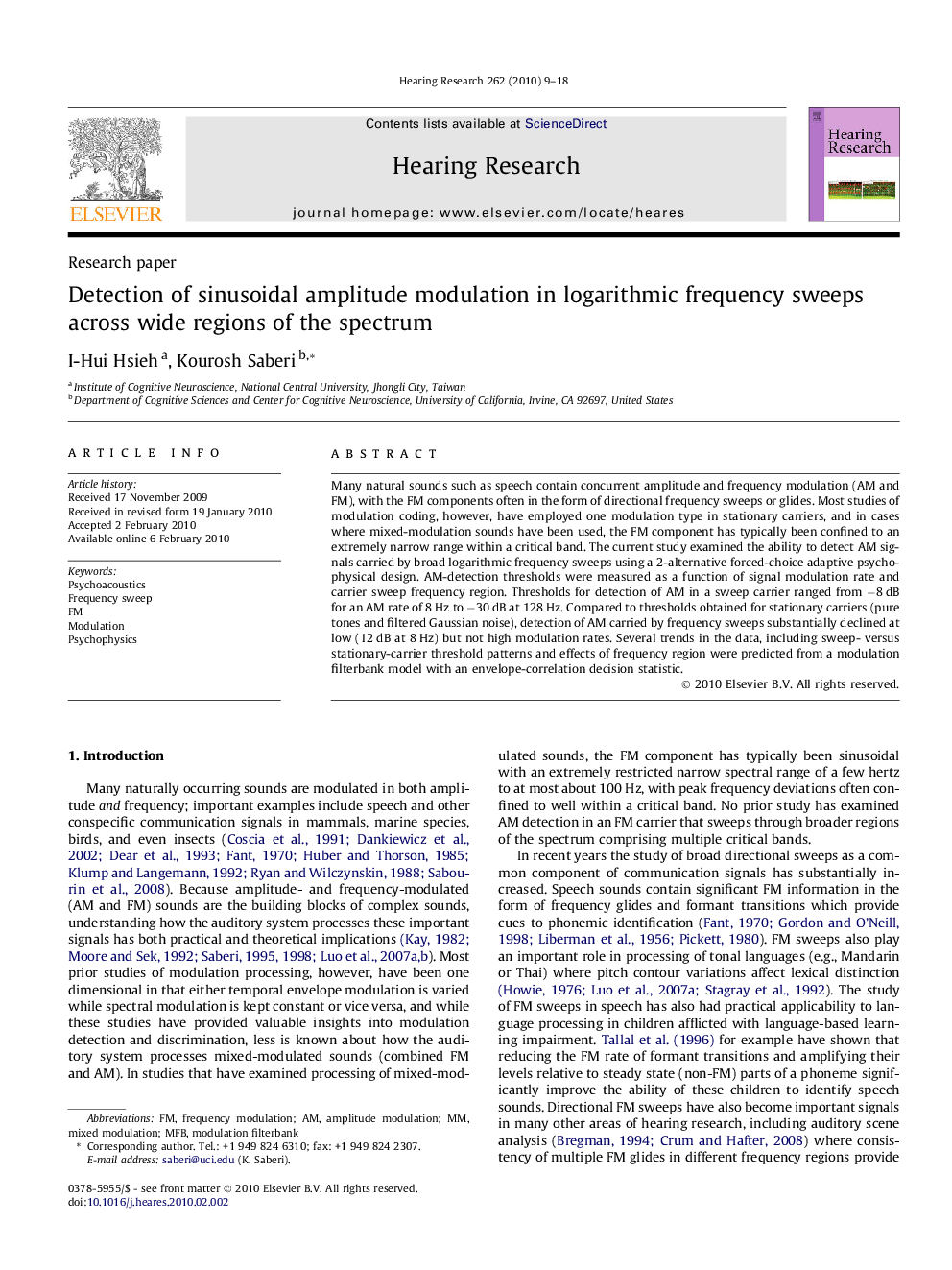| Article ID | Journal | Published Year | Pages | File Type |
|---|---|---|---|---|
| 4355812 | Hearing Research | 2010 | 10 Pages |
Many natural sounds such as speech contain concurrent amplitude and frequency modulation (AM and FM), with the FM components often in the form of directional frequency sweeps or glides. Most studies of modulation coding, however, have employed one modulation type in stationary carriers, and in cases where mixed-modulation sounds have been used, the FM component has typically been confined to an extremely narrow range within a critical band. The current study examined the ability to detect AM signals carried by broad logarithmic frequency sweeps using a 2-alternative forced-choice adaptive psychophysical design. AM-detection thresholds were measured as a function of signal modulation rate and carrier sweep frequency region. Thresholds for detection of AM in a sweep carrier ranged from −8 dB for an AM rate of 8 Hz to −30 dB at 128 Hz. Compared to thresholds obtained for stationary carriers (pure tones and filtered Gaussian noise), detection of AM carried by frequency sweeps substantially declined at low (12 dB at 8 Hz) but not high modulation rates. Several trends in the data, including sweep- versus stationary-carrier threshold patterns and effects of frequency region were predicted from a modulation filterbank model with an envelope-correlation decision statistic.
